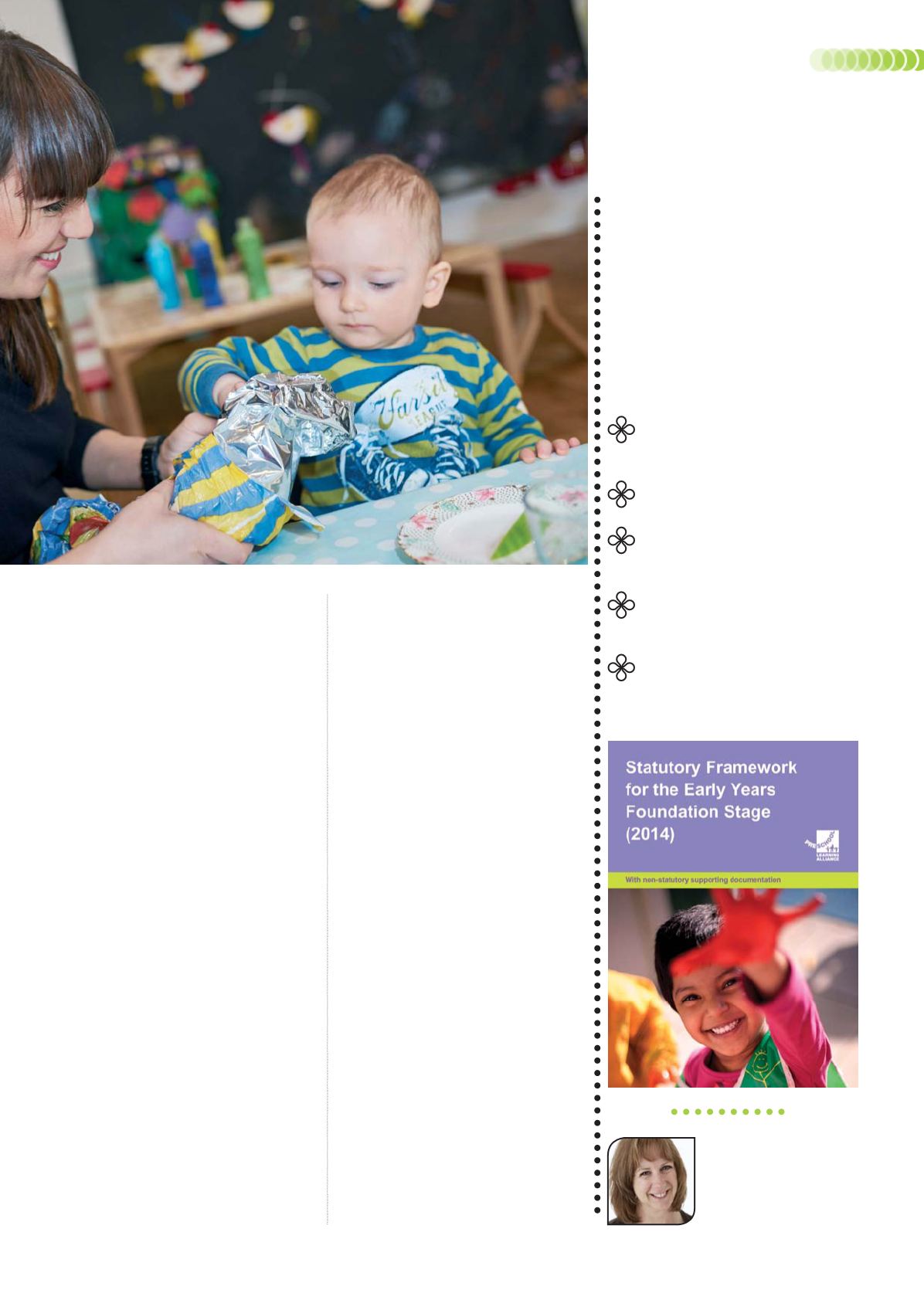
FURTHER
READING
nursery business
THE PRE-SCHOOL LEARNING
ALLIANCE OFFERS A RANGE
OF RESOURCES FOR NURSERY
OWNERS AND MANAGERS,
INCLUDING THE FOLLOWING
PUBLICATIONS:
D
Statutory Framework for the
Early Years Foundation Stage
(available to Alliance members only)
D
Essential Policies and
Procedures for the EYFS
D
Language Links: Creating a
Communication Rich Early Years
Environment
D
Fire Safety Record – For
recording fire safety training,
drills and equipment checks
D
Visitors Signing In Record
For more information, visit
shop.pre-school.org.uk
altered when required. Ergonomics are
important: furniture should be child-sized
with tables and chairs, soft cushions and
flooring, activity tables and designated
activity areas for learning to take place.
Storage units on wheels can be moved
around to help define different learning
areas and should be labelled with their
content so children can self-select. Nursery
equipment suppliers have an excellent
range of furniture and ideas for layout and
use. Storage of large play equipment may
require a garden shed or careful selection
of equipment that can be dismantled and
put away at the end of the session.
Office space
How the manager uses their office is a
good indication of how they lead and
manage their staff. It should be a place
where the door is open for anybody to
pop in and ask a question, but should
also provide privacy when difficult
conversations have to take place. Filing
cabinets that can be locked for personal
records, IT equipment with internet access
and, at the very least, a photocopier and
telephone are all essential equipment.
Staff room
Staff should be able to take breaks away
from areas used by children. If space
allows, it should have comfortable seating,
lockers, access to professional development
information and reading materials, tea-
and coffee-making facilities and a small
refrigerator. The staff room may have to
serve more than one purpose, e.g. storage,
so it should be kept tidy and uncluttered.
Bathrooms
Adults and children should not share
toilet facilities. There should be an area for
changing children who are in nappies that
can be cleaned after each use. Consideration
for staff who are lifting toddlers onto
changing mats is important; some changing
units are designed so that mobile toddlers
can climb up themselves. Toilets must be
checked regularly throughout the day, and
any cracked fixtures such as wall tiles or
plumbing must be repaired immediately to
prevent infection. Some nurseries choose
not to have doors on individual cubicles;
however, children’s privacy should be
respected at all times (
read more on creating
bathrooms for children on page 39 – Ed.
).
Kitchen
If cooked meals and snacks are prepared
on the premises then staff must receive
training in food hygiene and be aware
of how and where food is stored and
how the kitchen should be maintained.
Children should never have unsupervised
access to the kitchen area.
The most important consideration when
furnishing your nursery is to look at it from a
child’s perspective: what does it look, smell
and feel like? How comfortable is it? Can I
see my work on the walls? Do I feel safe and
belong here? Am I inspired to explore and
discover new things? Do I want to be here?
earlyyears.teachwire.net
37
Melanie Pilcher is
Policy and Standards
Manager at Pre-school
Learning Alliance.


